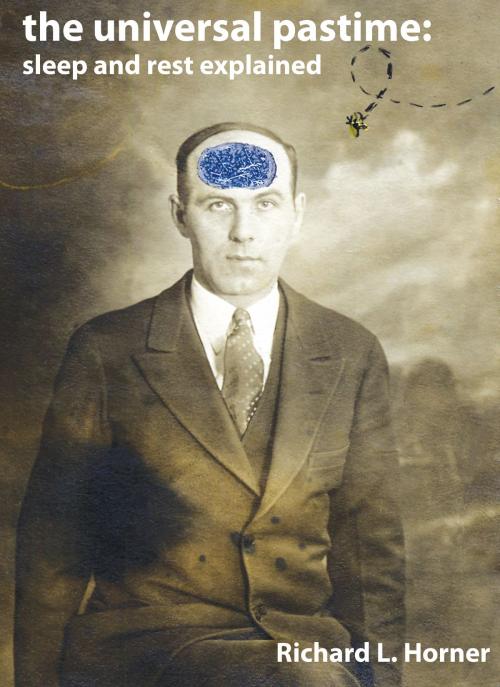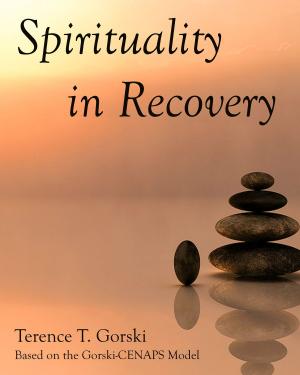The Universal Pastime: Sleep and Rest Explained
Nonfiction, Science & Nature, Science, Biological Sciences, Human Physiology| Author: | Richard L. Horner | ISBN: | 9781939389343 |
| Publisher: | BookBaby | Publication: | August 13, 2014 |
| Imprint: | Language: | English |
| Author: | Richard L. Horner |
| ISBN: | 9781939389343 |
| Publisher: | BookBaby |
| Publication: | August 13, 2014 |
| Imprint: | |
| Language: | English |
● Why the interest in rest and sleep? - All living things possess a sense of time. Like all animals - as well as plants, fungi and bacteria - we humans are hard-wired for a daily rhythm of rest and activity. The machinery that generates this daily rhythm resides in each and every one of our cells and it powerfully orchestrates our behavior. Setting aside time for rest and sleep optimally fits all living things and their bodily processes to the conditions of life. In fact, rest and sleep are deeply rooted in ancient biology, so much so that these characteristics have been conserved over the deep time that spans the three and a half billion years of life on earth. The dawn of the 24-hour industrial and technological society, however, occurred less than one hundred and fifty years ago. This time span constitutes only three human generations, and is but a ‘blink of an eye’ on the grand scale of natural history that spans billions of years. As a result of the technological age, humans are now the only living things that purposely ignore, disrupt and coerce the natural cycles of our cellular machinery to conform to artificially-imposed and often-irregular daily schedules. Given that sleep has major influences on body and mental health, the implications of understanding the states of rest and sleep, and why they exist, are large. ● Living in a ‘Time Crunch’ - Many of us live a busy existence, accommodating a hectic schedule often at the expense of optimal rest and sleep. Mismanaging sleep and haphazardly time-shifting our bodily processes is common. This mismanagement has adverse effects on the function and health of individuals and of society. Sleep problems impact nearly all of the key indicators of human health including mortality, predisposition to illness, daily function and mental health. Humans now consume drugs in huge quantities to counter the problems associated with poor sleep, altered waking functions and disrupted daily body rhythms. After first identifying the reason why rest and sleep exist in living things, this book concludes with discussion of the biological basis for human sleep health, and the effects of sleep disruption on mental health. ● The biological basis for sleep - Sleep exists across the network of life, encompassing (for example) worms, flies, cockroaches, scorpions, ants, bees, snails, crayfish, fish, birds and all mammals. Why we and other living things sleep and dream is typically touted as an apparent biological ‘mystery’ or unresolved scientific problem. The content of this book satisfies identification of why sleep evolved in the first place and why it persists as a successful and powerfully adaptive trait in biology. It also explains why some animals sleep with half of their brain at a time, and why some ‘choose’ to temporarily suspend sleep or even can do without it all together. Dreaming is also an intensely personal experience that has led to psychological and psychoanalytical theories (e.g., Jung and Freud) and even religious speculations. In particular, dreaming sleep has previously been viewed as a ‘hard problem’ to explain, an enigma. This perception is no longer necessary. The content of this book identifies a fully encompassing explanation of why sleep exists in nature. This explanation applies to organisms across the tree of life, with no exceptions. Specifically, this book identifies why sleep evolved and what fundamental function it still serves, in us and all other organisms. The material also places into context previous notions of rest and sleep, including the common suppositions and misconceptions. One explanation satisfies as a core reason for sleep across the tree of life. It is also identified how this root explanation of sleep works to influence the evolution of species, and how (and why) the property of sleep that is visible to natural selection has been found by a wide variety of species living in diverse conditions of existence.
● Why the interest in rest and sleep? - All living things possess a sense of time. Like all animals - as well as plants, fungi and bacteria - we humans are hard-wired for a daily rhythm of rest and activity. The machinery that generates this daily rhythm resides in each and every one of our cells and it powerfully orchestrates our behavior. Setting aside time for rest and sleep optimally fits all living things and their bodily processes to the conditions of life. In fact, rest and sleep are deeply rooted in ancient biology, so much so that these characteristics have been conserved over the deep time that spans the three and a half billion years of life on earth. The dawn of the 24-hour industrial and technological society, however, occurred less than one hundred and fifty years ago. This time span constitutes only three human generations, and is but a ‘blink of an eye’ on the grand scale of natural history that spans billions of years. As a result of the technological age, humans are now the only living things that purposely ignore, disrupt and coerce the natural cycles of our cellular machinery to conform to artificially-imposed and often-irregular daily schedules. Given that sleep has major influences on body and mental health, the implications of understanding the states of rest and sleep, and why they exist, are large. ● Living in a ‘Time Crunch’ - Many of us live a busy existence, accommodating a hectic schedule often at the expense of optimal rest and sleep. Mismanaging sleep and haphazardly time-shifting our bodily processes is common. This mismanagement has adverse effects on the function and health of individuals and of society. Sleep problems impact nearly all of the key indicators of human health including mortality, predisposition to illness, daily function and mental health. Humans now consume drugs in huge quantities to counter the problems associated with poor sleep, altered waking functions and disrupted daily body rhythms. After first identifying the reason why rest and sleep exist in living things, this book concludes with discussion of the biological basis for human sleep health, and the effects of sleep disruption on mental health. ● The biological basis for sleep - Sleep exists across the network of life, encompassing (for example) worms, flies, cockroaches, scorpions, ants, bees, snails, crayfish, fish, birds and all mammals. Why we and other living things sleep and dream is typically touted as an apparent biological ‘mystery’ or unresolved scientific problem. The content of this book satisfies identification of why sleep evolved in the first place and why it persists as a successful and powerfully adaptive trait in biology. It also explains why some animals sleep with half of their brain at a time, and why some ‘choose’ to temporarily suspend sleep or even can do without it all together. Dreaming is also an intensely personal experience that has led to psychological and psychoanalytical theories (e.g., Jung and Freud) and even religious speculations. In particular, dreaming sleep has previously been viewed as a ‘hard problem’ to explain, an enigma. This perception is no longer necessary. The content of this book identifies a fully encompassing explanation of why sleep exists in nature. This explanation applies to organisms across the tree of life, with no exceptions. Specifically, this book identifies why sleep evolved and what fundamental function it still serves, in us and all other organisms. The material also places into context previous notions of rest and sleep, including the common suppositions and misconceptions. One explanation satisfies as a core reason for sleep across the tree of life. It is also identified how this root explanation of sleep works to influence the evolution of species, and how (and why) the property of sleep that is visible to natural selection has been found by a wide variety of species living in diverse conditions of existence.















